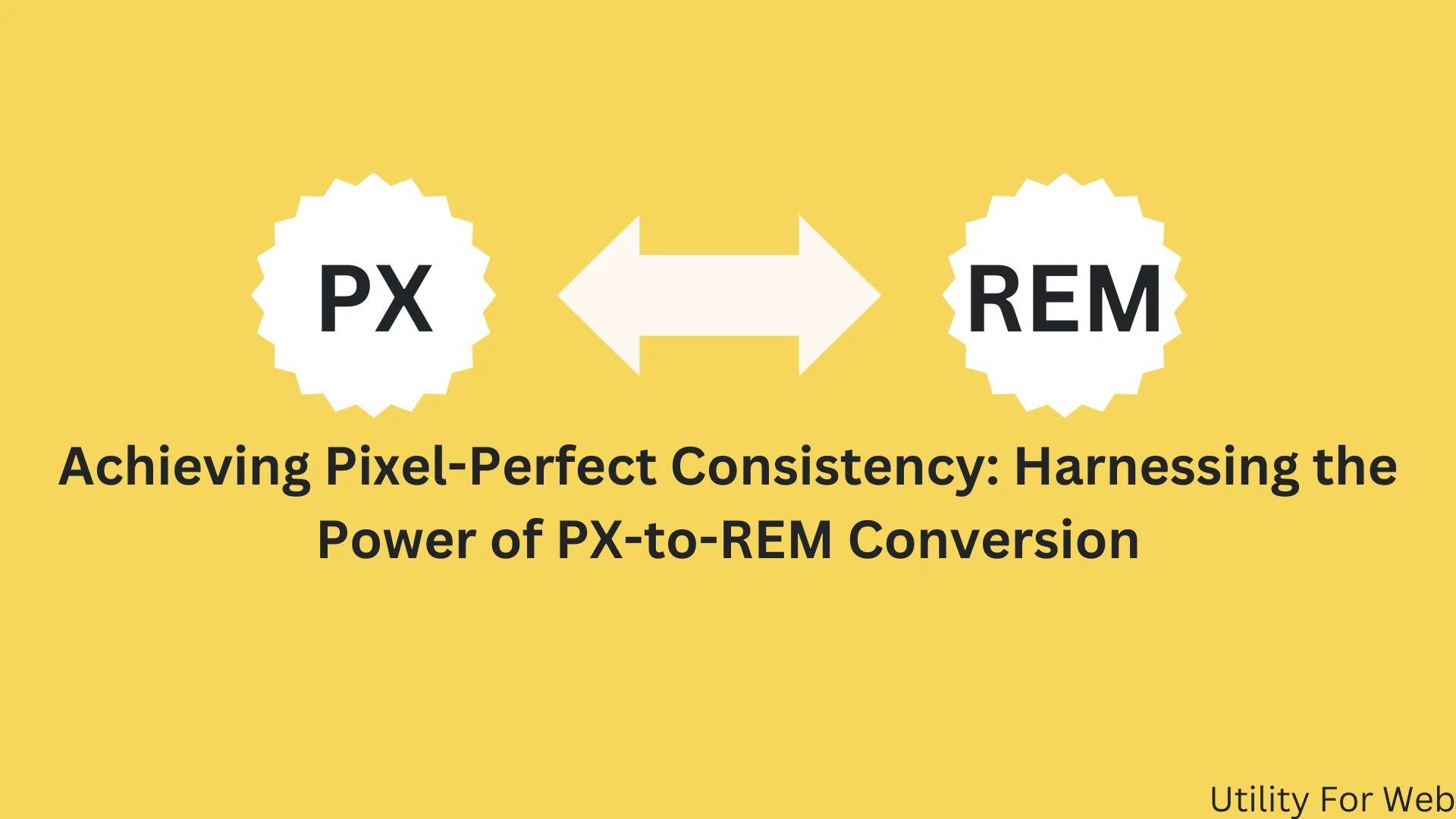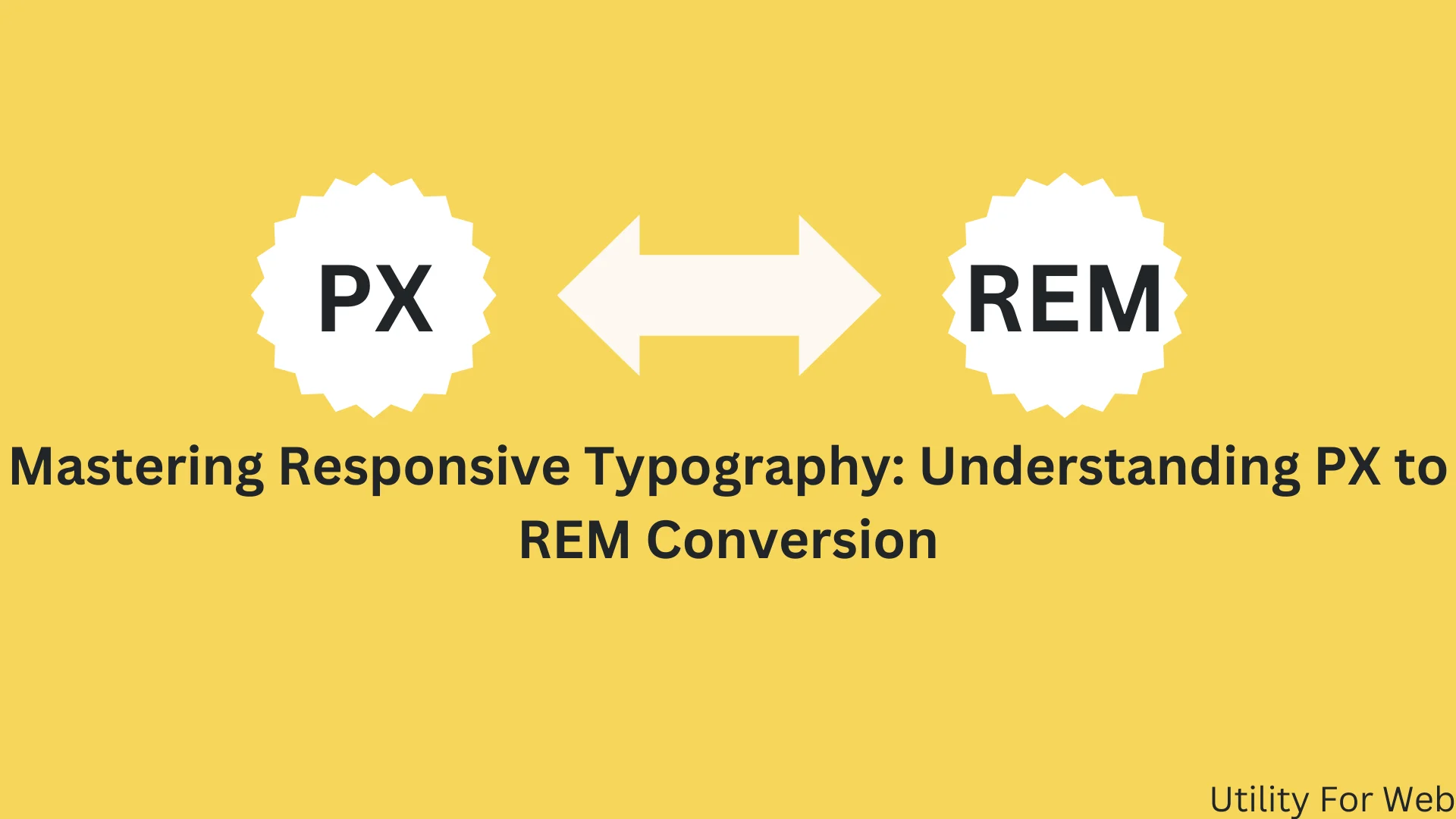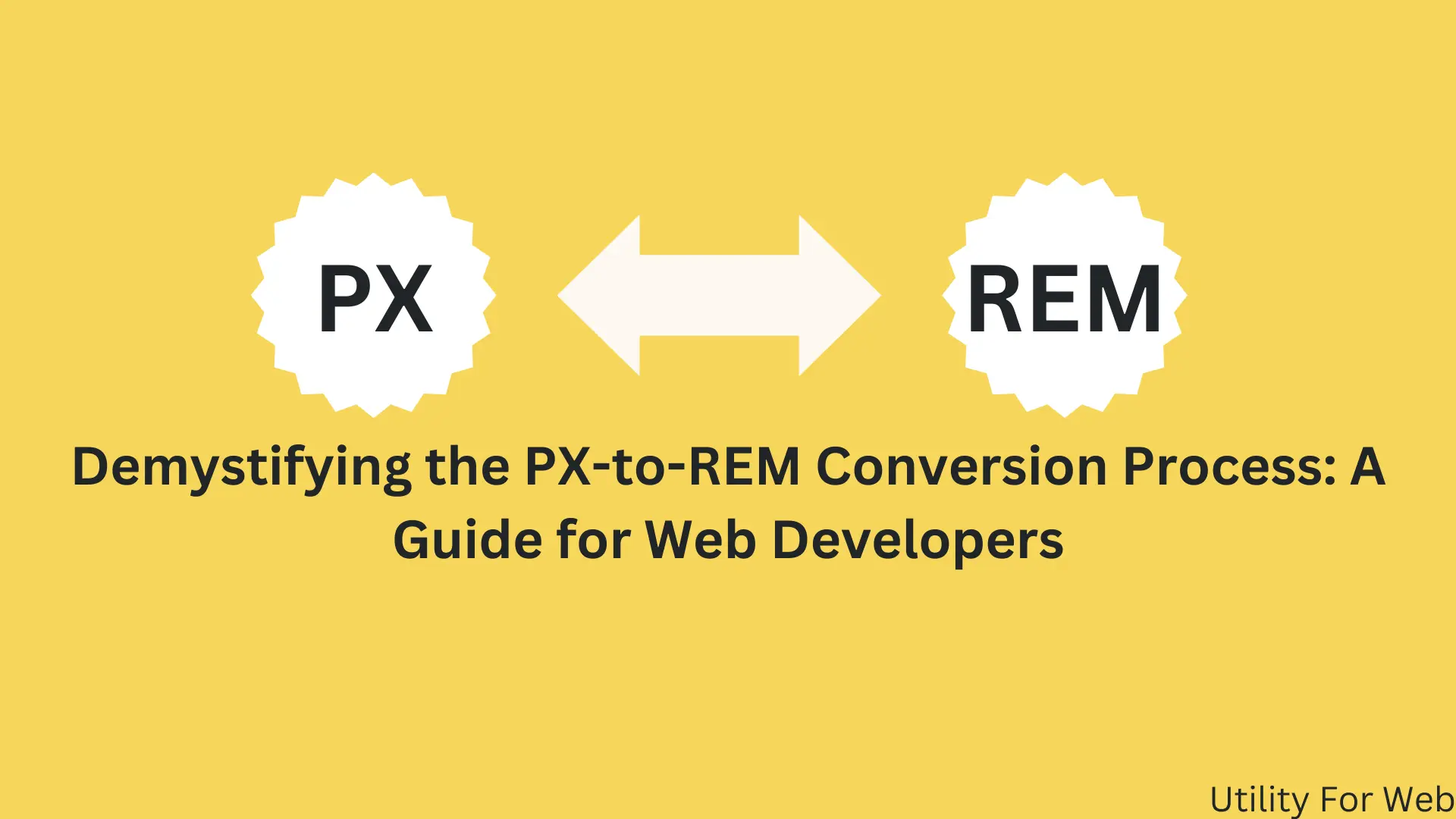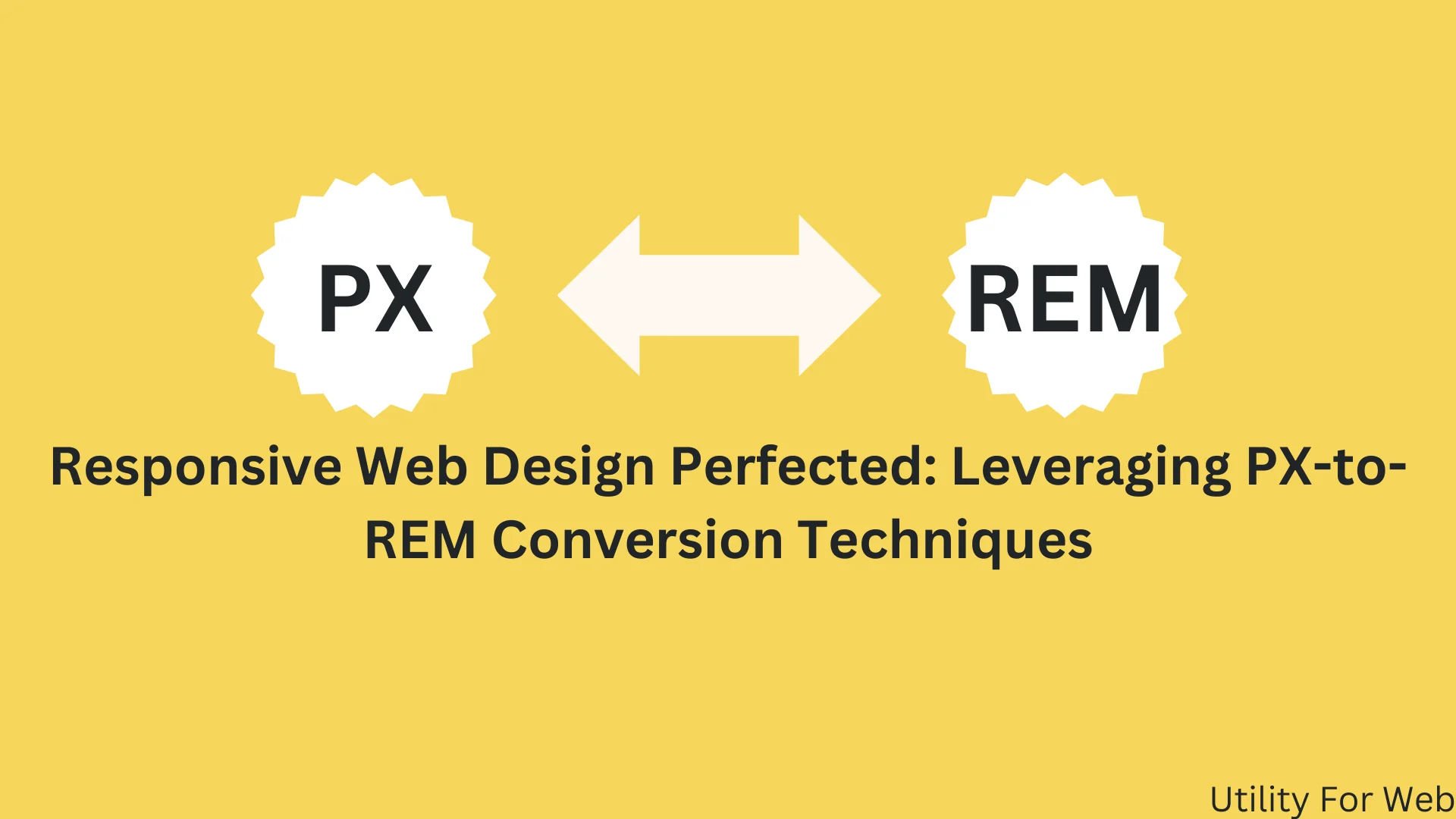
Harness the Full Potential of px to rem Conversion in Web Design
In the world of web development and design, units of measurement are pivotal in ensuring responsive and consistent designs across various devices. Among these units, px (pixels) and rem (root em) are two of the most commonly used. Understanding the conversion from px to rem and vice versa can significantly enhance your design efficiency and flexibility. This guide will explore the power of px to rem conversion, the importance of using a px to rem converter, and how a rem to px converter can streamline your workflow.
Understanding PX and REM
Pixels (px) have been a standard unit of measurement in web design for years. They provide a fixed measurement, ensuring that an element’s size remains consistent regardless of the device. However, this rigidity can be a limitation in responsive design. This is where rem units come into play.
The rem unit, brief for root em, is relative to the root component (as a rule the component) of the page. By using rem, designers can create scalable and more adaptable designs. This relativity makes it easier to manage sizes across different breakpoints, enhancing the responsiveness of the website.
The Importance of PX to REM Conversion
Converting px to rem allows designers to maintain consistency while embracing flexibility. A px to rem converter is an essential tool in this process, enabling you to effortlessly switch between fixed and relative units. By understanding and utilizing a px to rem converter, you can achieve scalable designs that look great on any device.
Converting px to rem allows designers to maintain consistency while embracing flexibility. A px to rem converter is an essential tool in this process, enabling you to effortlessly switch between fixed and relative units. By understanding and utilizing a px to rem converter, you can achieve scalable designs that look great on any device.
Utilizing a PX to REM Converter
A px to rem converter simplifies the process of converting pixel values to rem units. By entering the pixel esteem and the base textual style measure, you can immediately get the proportionate rem esteem. This tool is invaluable for developers and designers who want to ensure their designs are both precise and flexible.
Let’s look at an example:
- If your base font size is 16px and you have an element with a width of 32px, using a px to rem converter, you would find that 32px equals 2rem (32 / 16 = 2).
Using a px to rem converter not only saves time but also ensures accuracy in your conversions. Many online tools are available that can perform this conversion efficiently, providing quick and reliable results.
The Reverse: REM to PX Conversion
Sometimes, you may need to convert rem units back to pixels. This is where a rem to px converter proves invaluable. Whether you’re working with a design system that specifies sizes in rem or you’re trying to achieve pixel-perfect designs, a rem to px converter helps in maintaining precision.
For example, if you have an element that is 1.5rem and your base font size is 16px, using a rem to px converter, you would find that the element is 24px in size (1.5 * 16 = 24).
Practical Applications and Benefits
- Consistency Across Devices: By converting px to rem, you ensure that your design scales uniformly across different screen sizes. This is particularly advantageous for responsive web design.
- Ease of Maintenance: Adjusting the root font size allows for global changes, making maintenance easier. A px to rem converter facilitates this process by providing accurate conversions.
- Enhanced Accessibility: rem units can enhance accessibility, as they are scalable based on user preferences. Utilizing a px to rem converter guarantees that your design stays adaptable and user-friendly.
- Improved Performance: Relative units like rem can improve page performance by reducing the need for media queries. By using a px to rem converter, you streamline the CSS, potentially enhancing load times.
Conclusion
Harnessing the power of px to rem conversion is essential for modern web design. By using a px to rem converter and a rem to px converter, designers and developers can create responsive, scalable, and accessible designs. These tools not only ensure accuracy but also save time, making the conversion process seamless and efficient.
Whether you’re transitioning from a pixel-based design or looking to refine your responsive design skills, understanding and utilizing these converters is crucial. Embrace the flexibility and consistency offered by px to rem and rem to px conversions to enhance your web design projects.



